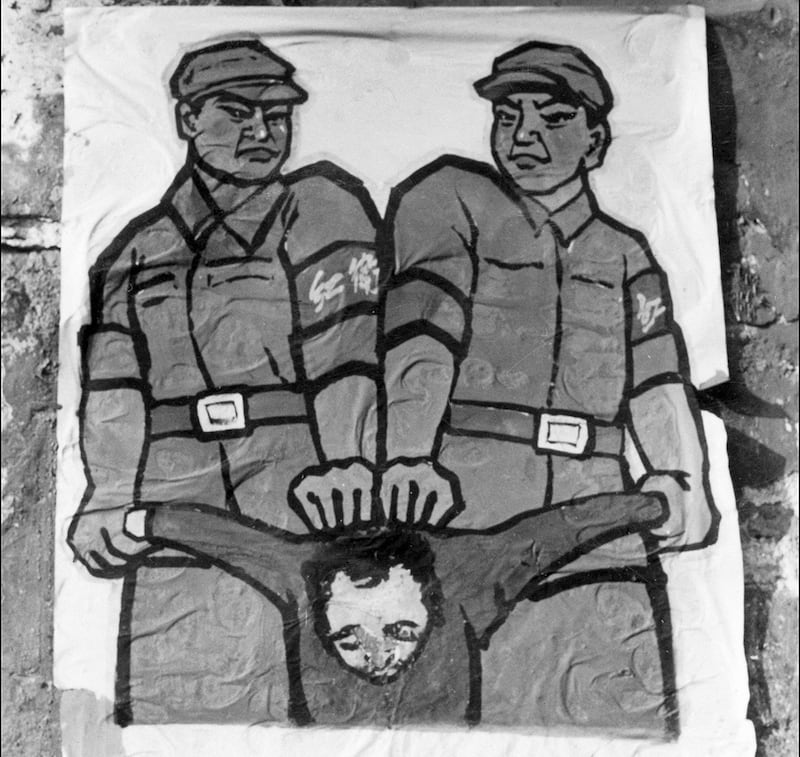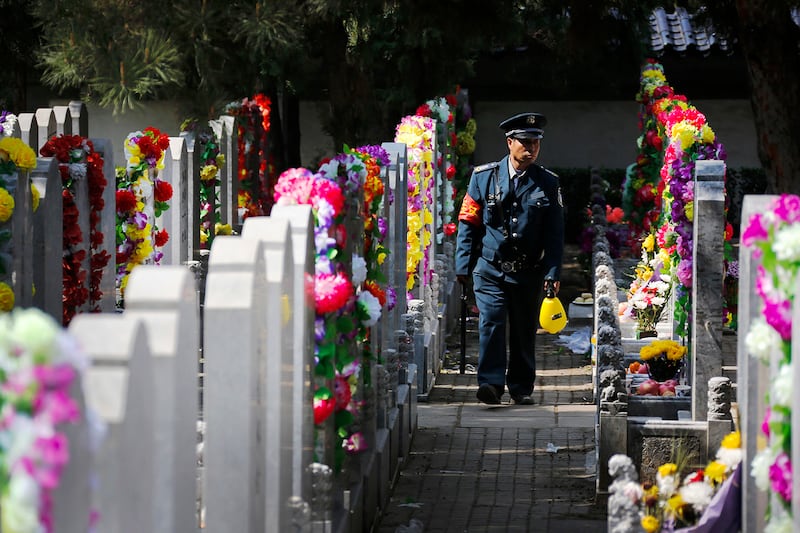Yitong Wu and Kit Sung for RFA Cantonese
The ruling Chinese Communist Party has enshrined the ashes of a general who presided over a Cultural Revolution massacre that included cannibalism of those deemed “enemies of the people” by late supreme leader Mao Zedong.
On Oct. 24, officials reburied the ashes of People’s Liberation Army founding general and former Guangxi regional party chief Wei Guoqing – 35 years after his death.
The full-honors burial ceremony at Beijing’s Babaoshan Revolutionary Cemetery – the resting place of China’s high-ranking leaders and revolutionary heroes – was attended by high-ranking guests, including the descendants of late revolutionary leaders Zhu De and Peng Dehuai.

The news prompted outrage and satire on Chinese-language social media, with comments highlighting Wei’s role in the Guangxi Massacre in which members of factional gangs killed an estimated 100,000-150,000 people through beheadings, beatings, burial alive, stoning, drowning, boiling and disembowelment, according to historical research.
Wei’s name is most strongly linked in the public mind with cannibalism during the massacre period in Guangxi’s Wuxuan and Wuming counties and Nanning city, after the victims were targeted as “enemies of the people” amid the factional violence of the 1966-1976 Cultural Revolution.
Public records cited in The New York Times in 1993 and by Radio France International in 2016 showed that at least 137 people were eaten, with thousands participating.
Chinese-language comments on this week’s news story on X, which is blocked in China but still accessed by some using circumvention tools, were darkly scathing about the move.
“So the Chinese Communist Party’s running-dog butcher is now a hero for killing people,” commented @ueinhu, while @sebonesama quipped: “Babaoshan is already packed full of demons and monsters – there’s always room for one more.”
Other jibes seemed to echo those made about the fictional killer Hannibal Lecter, with one user posting a meme of Wei faced with piles of deep-fried meat and a KFC logo in the background.
“Paying tribute to a legendary gourmet,” commented @WaterMargin_10, while @akira38458278 wondered if the move was to prevent the people of Guangxi from “digging him up and eating him” and @DingeX22503 concluded: “Only those who are ruthless enough get to be a hero in China.”
Hands ‘covered in blood’
Feng Chongyi, a professor at the University of Technology in Sydney, said Wei’s burial is politically symbolic, as it underscores Xi Jinping’s status as the heir of late supreme leader Mao Zedong, and is a tacit endorsement of the political “struggle” tactics used by his predecessor.
“Wei Guoqing was an executioner whose hands were covered in blood,” Feng told RFA Cantonese in a recent interview. “By giving him the honor of entering Babaoshan, Xi Jinping is endorsing the persecution mania of the Cultural Revolution, which reflects his own totalitarian resurgence.”
“It indicates that Xi Jinping and Mao Zedong have the same authoritarian nature,” Feng said.

Yang Haiying, a professor at Japan’s Shizuoka University who has researched Cultural Revolution violence against the ethnic Mongolian population, said the burial of Wei’s remains seemed to indicate Xi’s unwillingness to distance himself from that era of China’s recent history.
“When Wei Guoqing was in Guangxi, his people killed and ate people, and yet he gets to be in Babaoshan Revolutionary Cemetery,” Yang said. “The Chinese Communist Party has never condemned the Cultural Revolution … just paused it temporarily.”
“Xi Jinping is now restarting it; we’re right in the middle of it now,\” he said.
Yang said there was a leader similar to Wei in Inner Mongolia, who presided over massacres of tens of thousands of ethnic Mongolians during the Cultural Revolution, but that the authorities had refused to criticize his actions in public.
“The Chinese Communist Party is a violent regime, and all its talk of revolution just means violence,” he said. “So it will only reward its most violent followers.”
Wei Guoqing died of illness on June 14, 1989, 10 days after the Tiananmen massacre put an end to weeks of student-led pro-democracy demonstrations on Tiananmen Square.
His ashes were placed in storage at the Babaoshan Columbarium until the Oct. 24 burial ceremony.
Translated with additional reporting by Luisetta Mudie.

